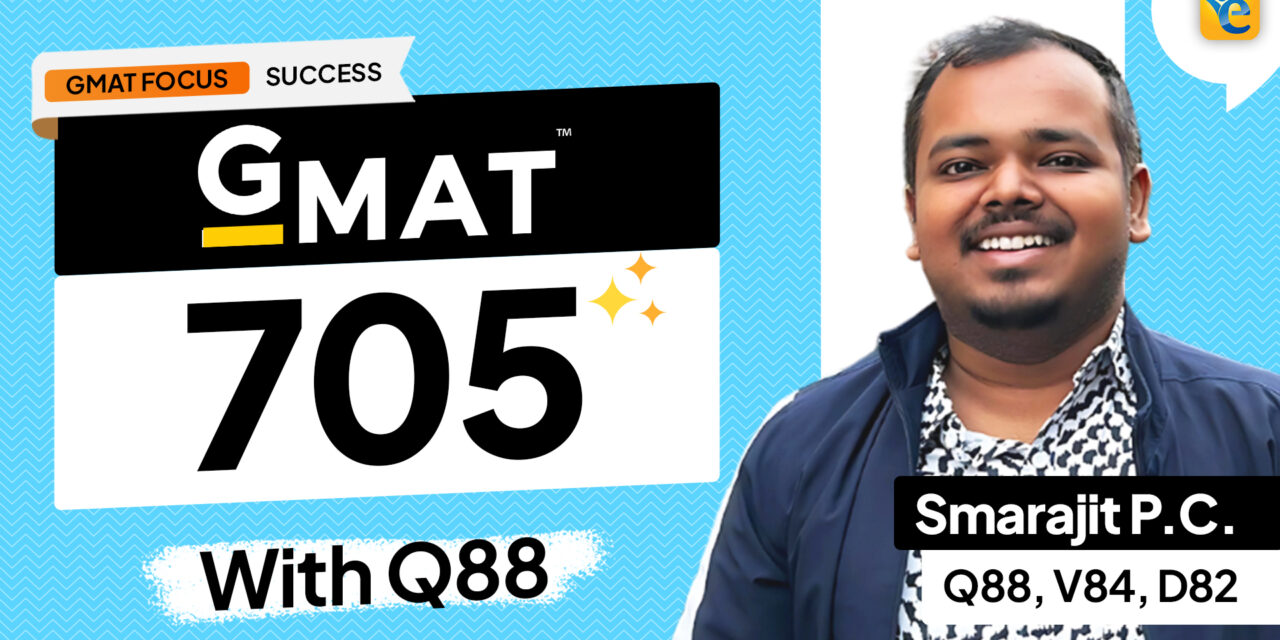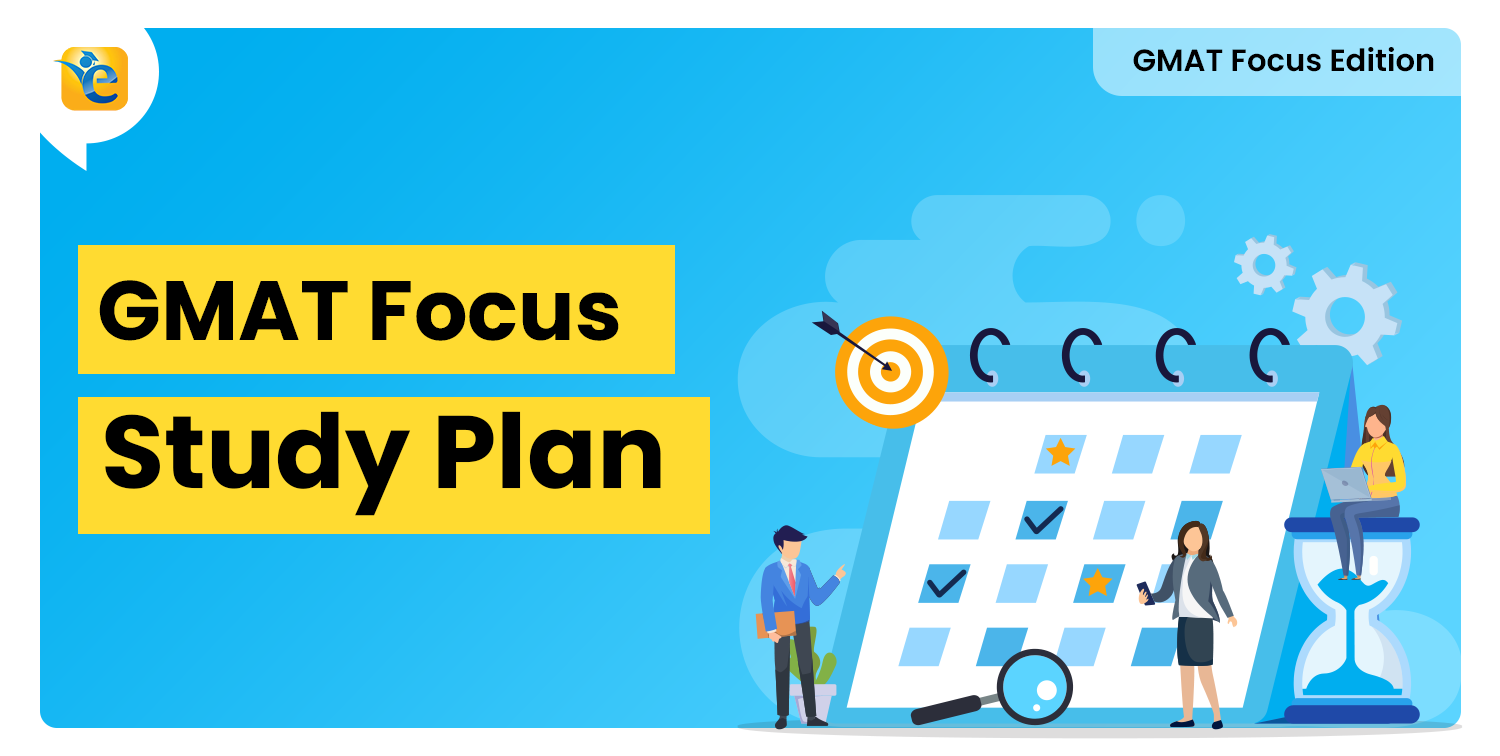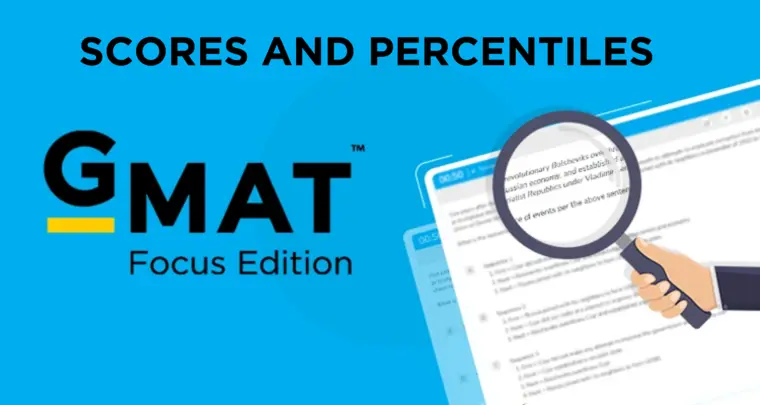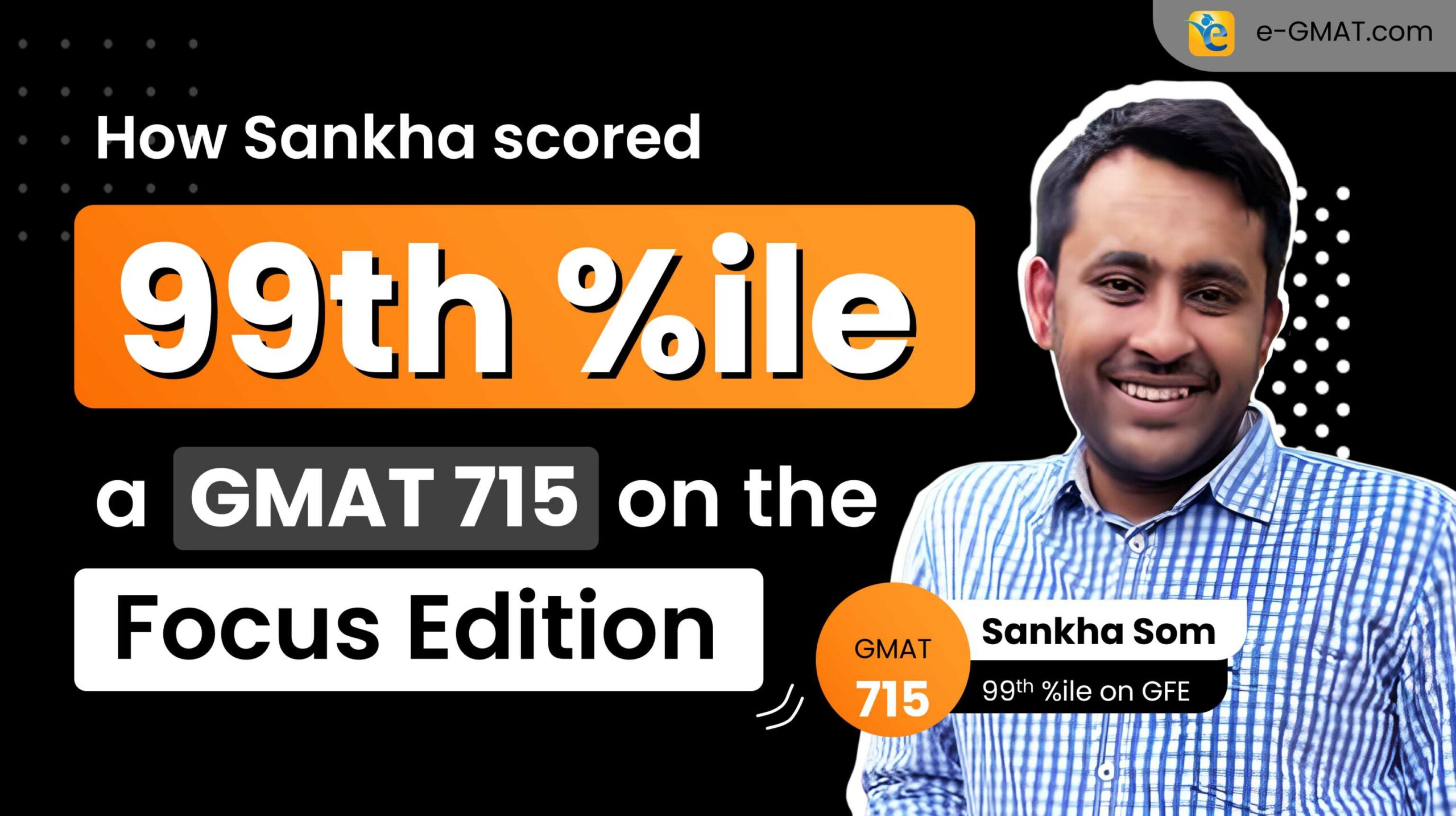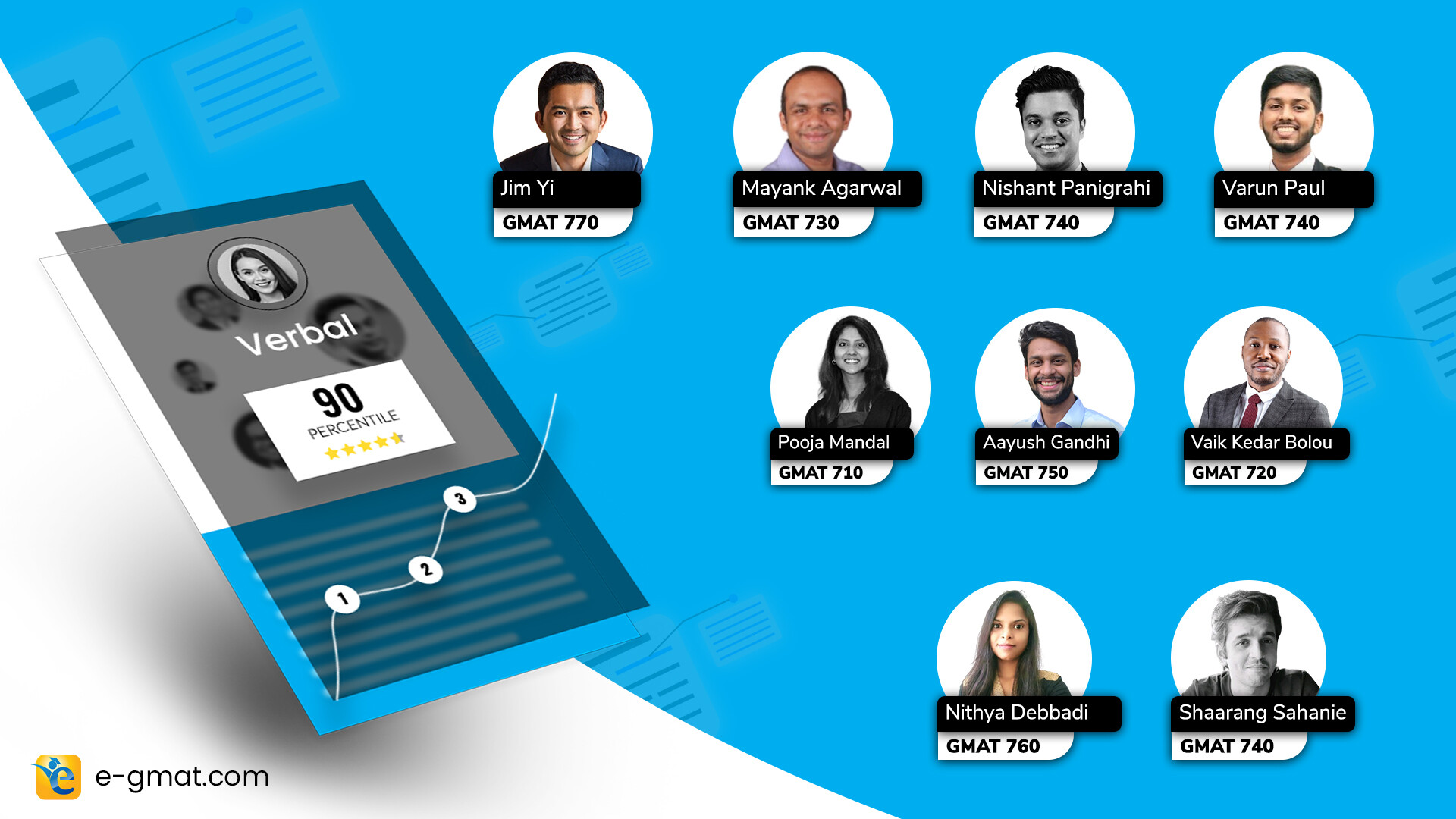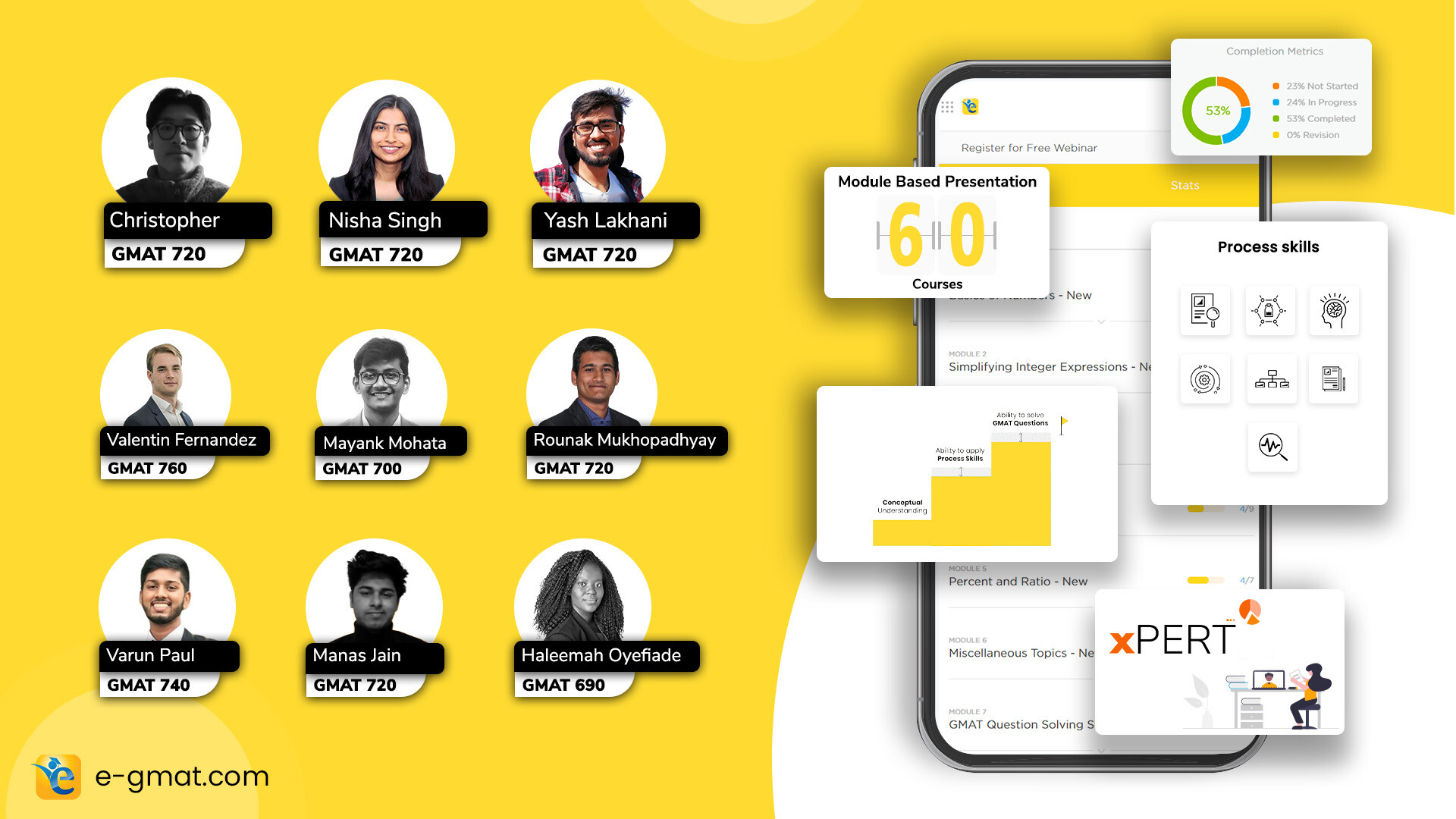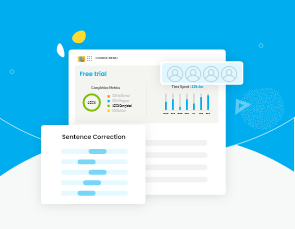For most GMAT aspirants, breaking the 700 barrier takes months of dedicated preparation. Smarajit proved it could be done in 30 days effectively – even while managing extensive international travel.
As an experienced professional stuck at 665 after months of self-preparation, Smarajit faced a critical decision. With application deadlines approaching and a month-long international business trip on the horizon, he needed a radical shift in his preparation strategy. The challenge wasn’t just about improving his score – it was about doing so with severe time constraints and frequent travel disruptions.
TRANSFORMATION AT A GLANCE
- Score: 665 on mocks → 705 (99th percentile)
- Timeline: 30 effective study days
- Verbal: 70th → 98th percentile
- Key Challenge: Month-long business travel during prep
The transformation began with a crucial realization – the traditional approach of self-preparation wasn’t going to break this mock score plateau. “If you are doing self-prep, there are like two steps to it. The first step is to know what to study. The second step is to execute it right,” Smarajit explains. “Given my work life and time commitment, I really didn’t have that much time to do both.”
This realization led Smarajit to a fundamental shift in his preparation strategy.
Breaking the Plateau: The Strategic shift
Attempting to self-prepare while juggling a demanding career had created an inefficient cycle.
“I would either take ..10 very easy questions, which I would get a 10 on 10, or take 10 very difficult questions and I would have been like only 3 out of 10,”
This inconsistent practice was not only affecting his confidence but also wasting precious preparation time.
THE SELF-PREP DILEMMA
• Inefficient practice leading to skewed practice
• Time split between finding resources and actual preparation
• Stuck at a score plateau on mocks
• No clear path to improvement despite effort
Why did self-prep not work out for Smarajit:
The breakthrough came when Smarajit decided to leverage a structured approach that would allow him to focus solely on execution. Rather than spending time figuring out what to study, he could channel his limited time into actual learning and practice. This shift proved particularly crucial for his verbal preparation, where he needed to improve from the 70th percentile to match his quantitative abilities.
While this strategic pivot was essential, the real challenge lay in transforming his verbal performance – an area where many test-takers struggle to see significant improvements. Smarajit’s approach to this challenge would prove to be equally methodical and surprisingly effective.
Mastering Verbal: A Systematic transformation
Verbal improvement required more than just practice – it demanded a complete overhaul of Smarajit’s approach to reading and analysis. Starting at the 70th percentile, he realized that merely solving more questions wouldn’t drive the breakthrough he needed.
Smarajit’s Verbal Transformation:
Smarajit’s Verbal Transformation to V84
The transformation began with Critical Reasoning, where Smarajit implemented a structured pre-thinking strategy.
“When you read … sentences in a Critical Reasoning passage, what pre-thinking does is help you retain significantly more in one reading. You start critically evaluating each sentence as you read, anticipating potential pitfalls. By the time you finish the passage, you’ve already predicted possible answers and identified logical gaps.”
As we can see from his performance in quizzes – internalising this approach had a huge impact on his accuracy –

This methodical approach yielded multiple benefits:
- Enhanced retention from first reading
- Reduced need for multiple readings
- Improved efficiency in processing arguments
- Prediction of potential answer choices
The pre-thinking framework proved valuable beyond Critical Reasoning, transforming Smarajit’s approach to Reading Comprehension as well. He developed the ability to process longer passages more efficiently by applying the same critical evaluation techniques, looking for logical connections and potential questions while reading.
“It’s a skill that helps even beyond GMAT. In my day job, I often need to read extensive text in limited time. This framework has improved my overall reading efficiency.”
While the verbal transformation was dramatic, Smarajit’s approach to Quant preparation demonstrated equal strategic thinking – though with a distinctly different focus. His experience here would prove that even strong quantitative abilities need careful refinement for GMAT success.
Optimizing Quant and Data Insights: Fine-Tuning for excellence
Unlike verbal, Smarajit’s quantitative approach focused on refinement rather than reconstruction. With a strong foundation in mathematics and data analysis from his professional background, his challenge was adapting these skills to GMAT’s specific requirements.
Smaraji’t Quant Challenges:
“Probability is something you learn in class 7 or 8, and I even learned it through engineering,” Smarajit explains. “But what is it that GMAT tests you on? It’s a huge subject – you need to know exactly what type of questions they ask and what they’re trying to evaluate.”
This insight led to a targeted preparation strategy focused on GMAT-specific patterns and common trap areas and improvement in hard accuracies to 70+ percent.
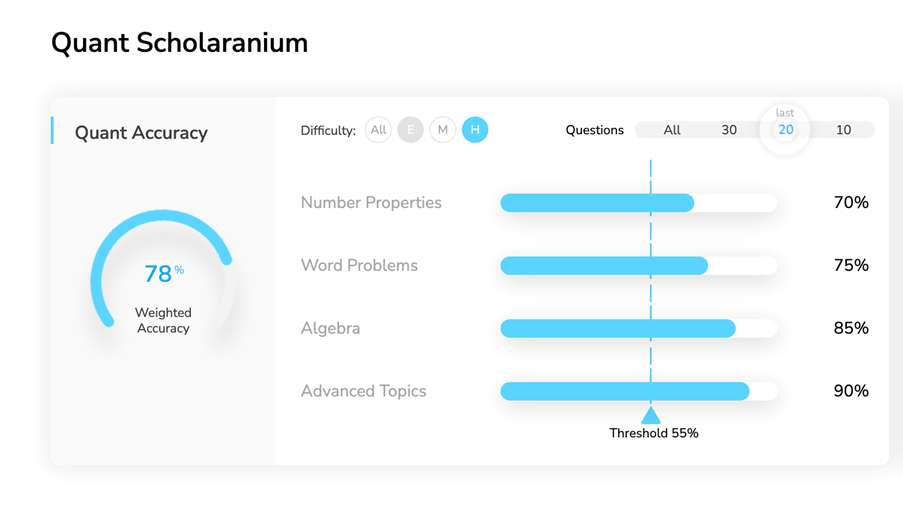
His approach centered on three key elements:
- Identifying GMAT-specific question patterns
- Understanding common trap cases, especially in Number Properties
- Developing time-efficient solving techniques
The result: consistent 90th plus percentile performance
For Data Insights, Smarajit leveraged his professional experience with data while adapting to GMAT’s unique format through sectional mocks.
“If someone has a limited amount of time and wants to get the most out of it, sectional mocks are the way to go, you get a curated set of questions without worrying about distribution or difficulty levels.”
The sectional mock approach proved particularly valuable during his travel period, allowing for focused 30-minute practice sessions that maintained momentum without requiring extensive time blocks.
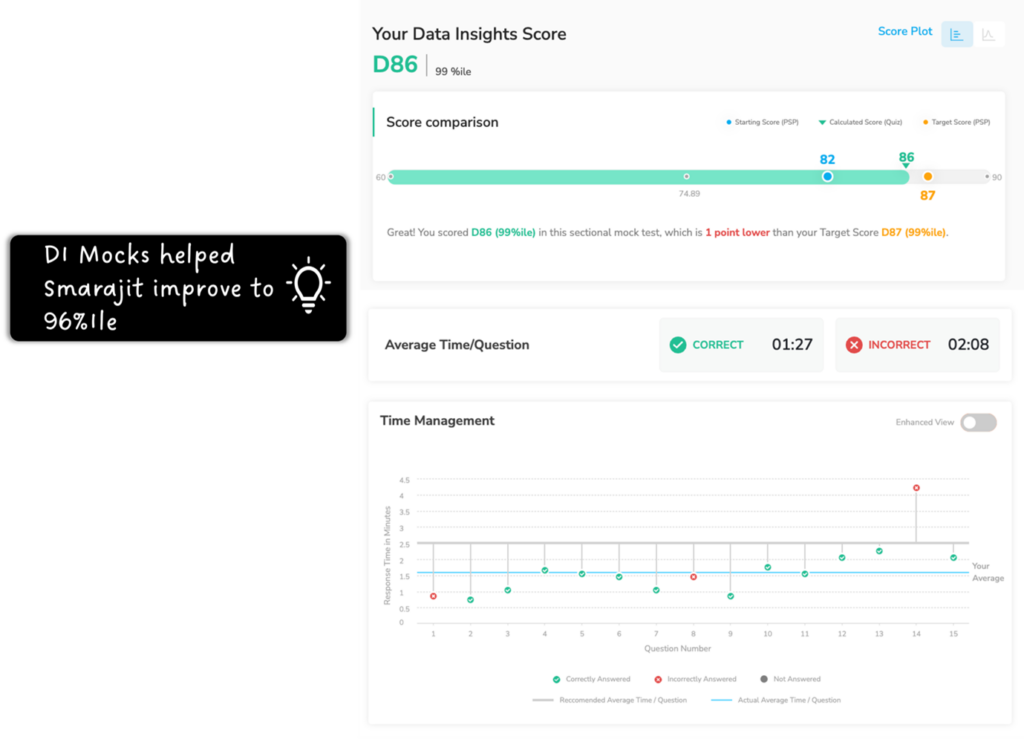
This strategy enabled him to:
- Stay connected with preparation during travel
- Get regular performance feedback
- Maintain consistency despite schedule constraints
This ability to adapt his preparation to varying schedule demands proved crucial in Smarajit’s journey. His time management strategy would become the cornerstone of his success, especially during the challenging travel period.
Time Management: Turning Constraints into Strategy
With a month of international travel during his preparation period, Smarajit’s success hinged on turning time constraints into a structured advantage. His approach demonstrated that effective GMAT preparation doesn’t always require long study sessions – it requires strategic planning and consistent execution.
How did Smarajit manage prep with constant travel?
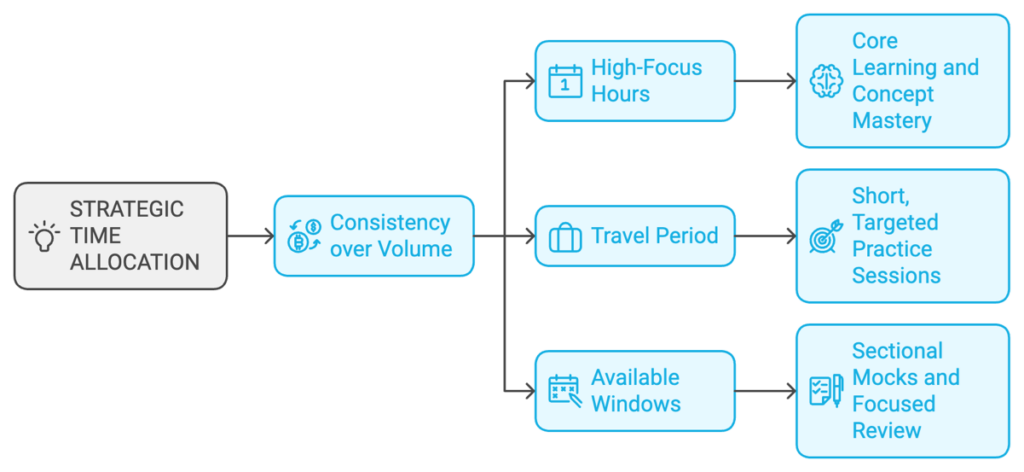
“The first step is having an honest assessment of how much time you have,” Smarajit emphasizes. “There’s no point thinking you can squeeze in three hours when you realistically have one.” This pragmatic approach led to a three-phase preparation strategy that maximized his limited time.
Recognizing that certain aspects of preparation required focused attention, Smarajit front-loaded his intensive study:
- Completed core verbal courses requiring sustained focus
- Established fundamental frameworks and strategies
- Built a strong foundation for independent practice
During his month of travel, Smarajit adapted his preparation to fit unpredictable schedules:
- Utilized 30-40 minute windows for sectional mocks
- Maintained consistency with daily micro-sessions
- Focused on quality of practice over quantity
“If you have a week, give everything in that week, Don’t think you’ll do it on Monday and then make up for it on Saturday-Sunday.”
This commitment to consistency, even during travel, helped maintain momentum throughout his preparation.
This strategic approach to time management, combined with targeted preparation in each section, culminated in a successful first attempt at the GMAT. The lessons from Smarajit’s journey offer valuable insights for professionals preparing under similar constraints.
From Strategy to Success: Key Learnings
Smarajit’s journey from 665 to 705 in just 30 effective days, while managing international travel, demonstrates that GMAT success is more about strategic preparation than duration. His experience offers several crucial insights for professionals preparing under similar constraints.
The transformation hinged on three key elements:
- Strategic resource allocation based on strengths and weaknesses
- Adaptation of study methods to match time availability
- Consistent execution even during travel periods
“Looking back, the score isn’t about fate – it’s about targeted preparation and executing it to the best of your ability. The platform provided the structure, but consistency in execution made the difference.”
For professionals balancing GMAT preparation with demanding careers, Smarajit’s journey offers a clear message: success doesn’t require months of full-time study, but rather a strategic approach.
Breaking the 700 barrier while managing a demanding career and travel schedule isn’t just possible – with the right approach and consistent execution, it’s achievable in a remarkably focused timeframe. Smarajit’s success proves that it’s not about having more time, but about making the most of the time you have.
Are you planning to pursue MBA at top business schools? Let us help you conquer the first step of the process i.e., taking the GMAT. Take a free mock test to understand your baseline score and start your GMAT prep with our free trial. We are the most reviewed online GMAT Prep company with 2000+ five star reviews on GMATClub.


